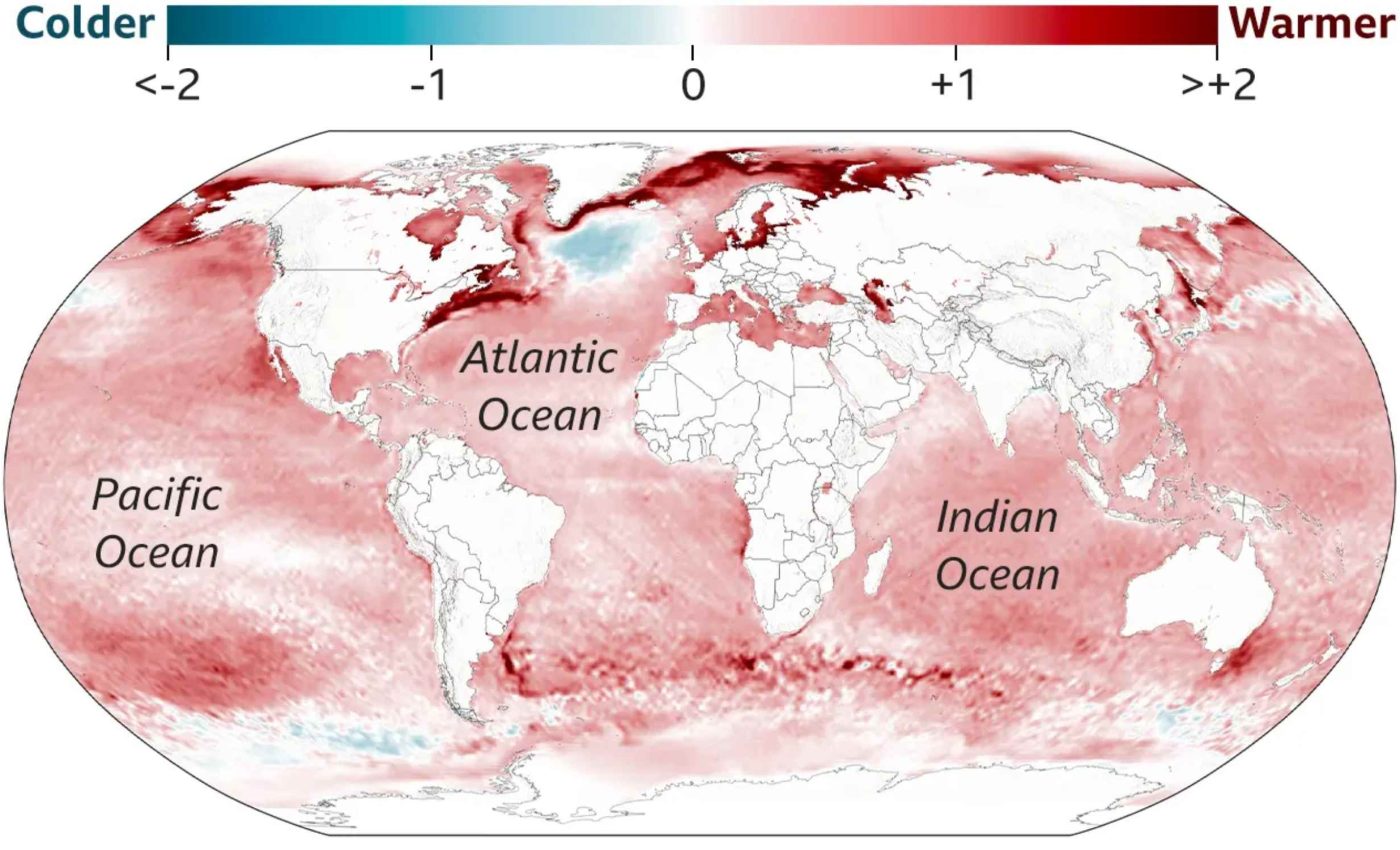
Scientists identify two global ocean bands heating at record rates
Oceans are absorbing more heat than ever before. Researchers indicate that these waters have gained warmth at an unprecedented rate, and that shift affects weather patterns and marine life.
Scientists have examined global measurements from 2000 to 2023, comparing them to early-2000s conditions.
The findings point to two latitudinal stretches near 40 degrees in both hemispheres where ocean temperatures are climbing notably.
“It’s unusual to discover such a distinctive pattern jumping out from climate data,” said Dr. Kevin Trenberth from the University of Auckland and the National Center of Atmospheric Research (NCAR) in Boulder, Colorado, who led the study.
Background on ocean heat trends
Experts have documented rising ocean heat content for decades. Tracking this heat provides clues about the planet’s changing climate, since more than 90% of extra warmth is stored in the oceans.
Thermal changes do not distribute evenly. Certain latitudes have seen accelerated heating, while others stay relatively stable.
The two fast-warming areas are around 40 degrees latitude in both hemispheres.
Scientists notice that these spots reach from the North Atlantic near the east coast of the United States to the waters near Japan, and from regions near New Zealand and Tasmania across to the Atlantic east of Argentina.
This distribution has coincided with shifts in wind patterns that follow the jet stream, a current of powerful winds moving west to east. Ocean currents have also responded to the same shifts, channeling heat differently than before.
Data methods and measurement depth
The research team analyzed temperature data from 1-degree latitude strips of ocean water extending to depths of 6,500 feet. They tracked changes from the year 2000 to 2023, using the early 2000s as a baseline.
To quantify warming, they used zettajoules, a unit equal to one sextillion joules. This high-precision metric helped them detect subtle but significant shifts in ocean heat content, even at deeper layers rarely measured by earlier technologies.
Tropical ocean zones also show changes
Besides the mid-latitude bands, researchers observed noticeable warming between 10°N and 20°S, covering a large portion of the tropics.
However, these changes were less consistent due to strong temperature swings caused by recurring El Niño and La Niña events.
Even with this variability, the tropics are still absorbing significant heat. That stored energy contributes to atmospheric moisture levels, which can later impact rainfall patterns across distant regions through teleconnections, climate interactions that span thousands of miles.
Unusual shifts in the jet stream
A poleward movement of storm tracks appears to pair with the warming bands. Researchers suggest that subtle changes in atmospheric circulation and winds have contributed to new pathways for heat transport.
These wind patterns stir up the sea surface and guide where warm currents flow. Ocean heat can then seep into deeper layers, adding to a chain reaction that affects storms and rainfall.
Looking at the bigger picture
Faster ocean heating can influence the amount of water vapor in the atmosphere, which in turn strengthens conditions for heavier precipitation.
That extra moisture amplifies local rainfall, fueling concerns about floods and more frequent storm events.
Scientists emphasize the importance of natural variability when examining climate patterns. While human activity drives long-term warming, regional ocean dynamics also play a part.
Natural cycles and long-term trends
Although human-caused climate change is the primary driver of rising ocean heat, the researchers emphasize the role of natural variability.
Events like the El Niño–Southern Oscillation can cause short-term fluctuations that either amplify or temporarily mask the long-term warming signal.
These overlapping influences make it harder to draw conclusions from short-term data alone. That’s why tracking trends across decades, as this study does, is critical for separating persistent climate signals from temporary climate noise.
Why ocean heating matters
Sharp temperature changes can unsettle marine ecosystems, leading to altered habitats and shifting species distribution. Warmer waters disrupt feeding grounds and migration routes, affecting fisheries and coastal economies.
The new data highlight how different parts of the ocean can respond in dissimilar ways to warming. This underscores the importance of continued research to track changes and develop response strategies.
One of the most unexpected findings is the lack of substantial warming near 20 degrees latitude in both hemispheres.
These subtropical zones have remained relatively stable in ocean heat content, which stands out against the otherwise widespread warming trend.
Researchers suggest this could be due to the way ocean currents and atmospheric circulation bypass these regions. Instead of accumulating heat, the subtropics may be acting as transit zones, where energy is redistributed rather than absorbed.
The study is published in the Journal of Climate.
—–
Like what you read? Subscribe to our newsletter for engaging articles, exclusive content, and the latest updates.
Check us out on EarthSnap, a free app brought to you by Eric Ralls and Earth.com.
—–













